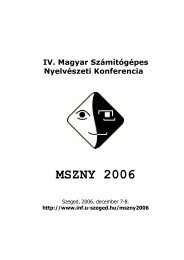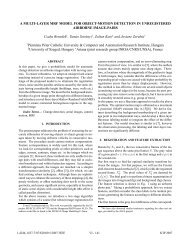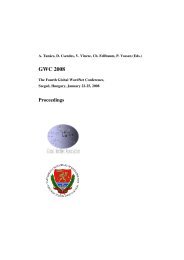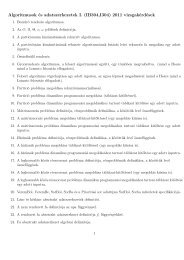Elastic Registration of 3D Deformable Objects
Elastic Registration of 3D Deformable Objects
Elastic Registration of 3D Deformable Objects
You also want an ePaper? Increase the reach of your titles
YUMPU automatically turns print PDFs into web optimized ePapers that Google loves.
template observation proposed GMMREG CPD<br />
Fig. 1. Some results on the synthetic images. Observation and registered objects were overlayed, overlapping voxels are shown in yellow, while non-overlapping<br />
ones in red and green.<br />
size <strong>of</strong> the template object |F t | and the number <strong>of</strong> function<br />
calls I.<br />
As an example, we will now analyze the complexity <strong>of</strong><br />
a third order polynomial deformation (i.e. d = 3) model<br />
used also in our experiments. To generate sufficiently many<br />
equations, we need at least k = 60 ω i functions. Therefore let<br />
us choose power functions with maximal degree <strong>of</strong> 3:<br />
{(n i , m i , o i )} 64<br />
i=1 = {(a, b, c) | 0 ≤ a, b, c ≤ 3} (20)<br />
generating a total <strong>of</strong> 64 equations. Using the formulas above,<br />
64∑<br />
i=1<br />
d M = 33<br />
γ(d M ) = 7, 140<br />
γ(d i )γ(n i + m i + o i + 1) = 16, 453, 488<br />
In our experiments the average number <strong>of</strong> function calls was<br />
380 for this deformation model and ω i set. Note that the<br />
number <strong>of</strong> function calls is the same for both formulas, since<br />
they evaluate the same entity but in different ways. Hence, the
















